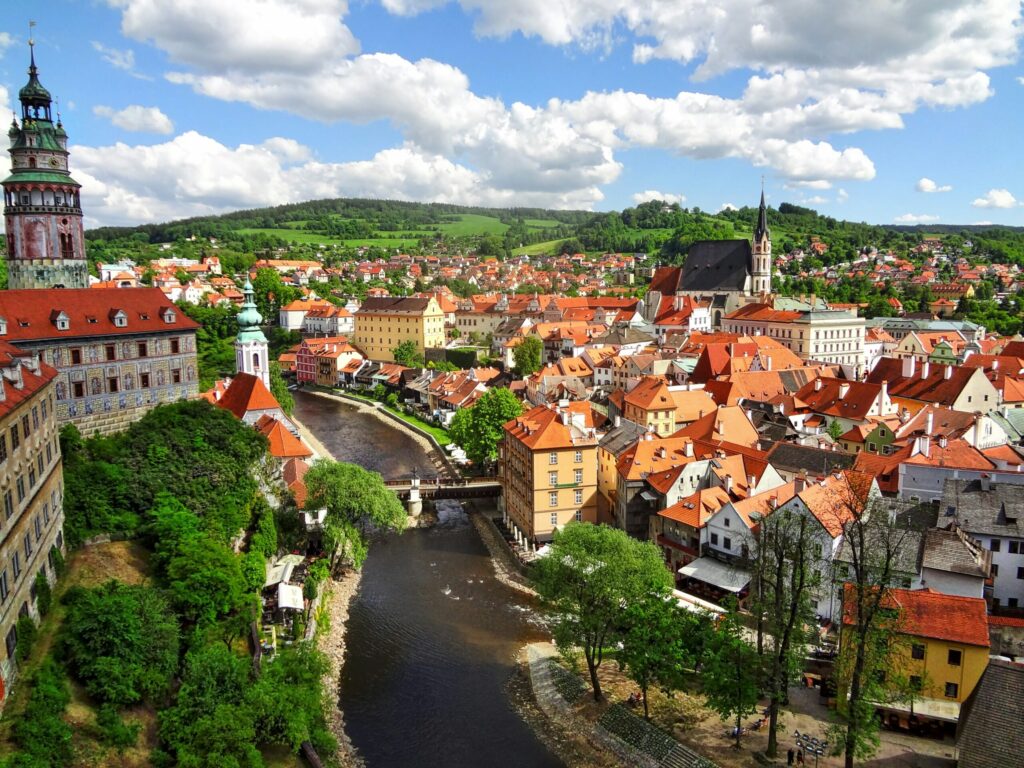
Tourism returns to pre-pandemic levels: Prague and many other destinations offer a great potential for tourism growth in the Czech Republic
Tourism in the Czech Republic returns to pre-pandemic levels
It is encouraging to see that the tourism sector in the Czech Republic has finally surpassed pre-pandemic levels during 2023. During the past year, in fact, accommodation facilities hosted more than 22 million visitors, whereas in 2019, this figure had stopped just short of 22 million.
The increase in visitors and the rise in average room prices are positive signs for the hotel industry in the country. However, the decrease in the presence of foreign tourists, particularly in Prague, affected the overall overnight stays. The lack of around 1.3 million foreign visitors is a factor to be taken into consideration, but it is positive to note that Italy remains one of the main countries of origin of tourism in the Czech Republic, ranking sixth in the list of nationalities choosing to visit the country.
The 10% increase in average room prices, in line with general inflation, is an indicator of sustainable growth in the hotel sector. Furthermore, the 79% room occupancy rate in Prague hotels suggests a growing trend, indicating an increase in demand for accommodation in the city.
The past year has therefore brought smiles to the faces of hotel and holiday home managers, and the AHR ČR association seems to be satisfied with the results, emphasizing how the surpassing of pre-pandemic levels, as well as the growth in prices and occupancy rates, represent valuable indicators of a gradual and stable recovery of the tourism sector in the Czech Republic which experts forecasts that will reach an estimated 44 million visitors by 2026.
One of the main factors influencing the increase in overall occupancy rates is represented by the increasing number of domestic guests, showing a growing preference for vacationing within their own country. Additionally, the preferences of domestic guests have evolved, with an increasing demand for enhanced amenities and services in accommodations.
Which are the favorite destinations for tourists in the Czech Republic?
At the top of the list of favorite destinations for foreign tourists in the Czech Republic is undoubtedly the capital, Prague. The heart of the country, the Bohemian capital is by far the most popular travel destination in the Czech Republic. Elegant and melancholic, Prague is undoubtedly one of the most beautiful cities in Europe which has enchanted the entire world with its beauty and architecture, its legends, and the atmosphere that can be felt in every corner.
But don’t make the mistake of believing that Prague is the only destination worth to be visited in the Czech Republic. The whole country presents itself as a fascinating destination for history lovers, art enthusiasts, and anyone looking for authentic adventures.
Below, we will have a look at the other regions and cities worth a visit. These areas are certainly less internationally known compared to Prague, but they are still definitely charming and already very much loved by Czech and foreign tourists alike.
Karlovy Vary
Karlovy Vary, or Karlsbad in German, is a regional and statutory city in the Karlovy Vary region in western Bohemia, approximately 110 km far from Prague.
Founded in the 14th century by Charles IV, the city’s origin is intertwined with legend. According to the tale, the emperor commissioned its construction after the accidental discovery of thermal springs by his hunting party. The spa quickly gained popularity among noble families and affluent townspeople by the 16th century. However, a series of natural disasters led to the loss of many structures from this early period so the majority of the existing monuments stem from the city’s golden age in the 18th and 19th centuries.
In 2021, the city was added to the UNESCO World Heritage List, along with 11 other spa centers in seven European countries, including Mariánské Lázně and Františkovy Lázně in western Bohemia.
The town hosts various events throughout the year, with the Karlovy Vary International Film Festival standing out as a prominent social gathering, drawing filmmakers from around the globe. Additionally, thanks to the town’s unique environment and architecture, Karlovy Vary has served as a picturesque backdrop for many renowned films like “James Bond: Casino Royale.”
Beyond its renowned spa and film festival, the international reputation of Karlovy Vary is bolstered by its notable products. Notably, the town is famous for the production of liqueurs, notably the well-known Becherovka, as well as the crafting of crystals and porcelain. It proudly claims to be the hometown of esteemed brands such as Moser and Thun.
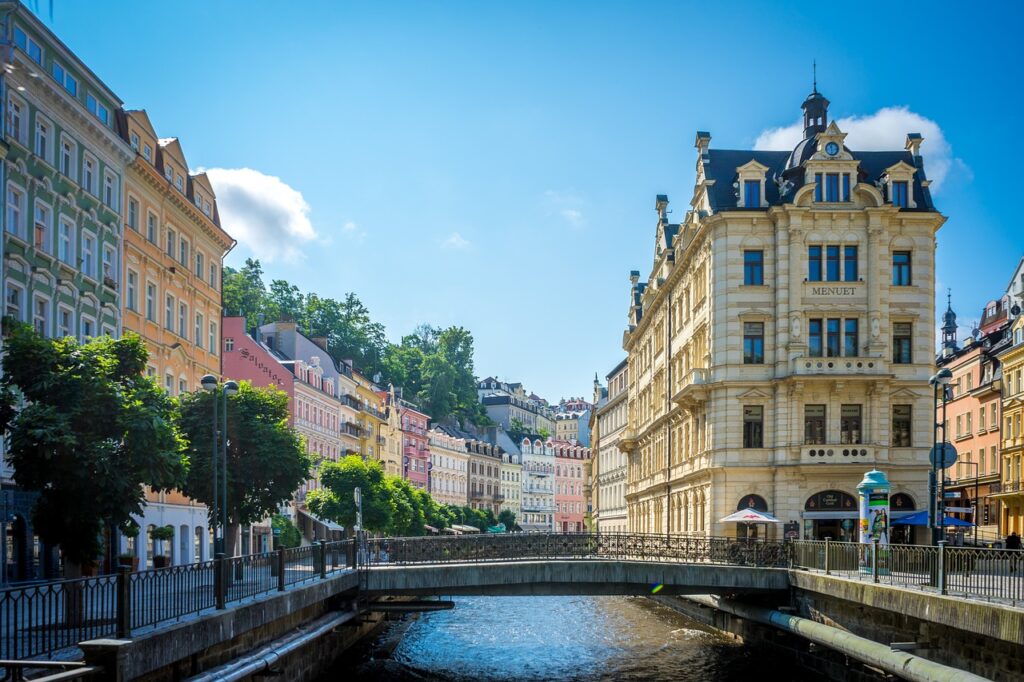
Brno and the South Moravian Region
The South Moravian Region is a distinct administrative division situated in the southeast of Czechia. It encompasses the southern part of the historic Moravia, with its focal point being the capital, Brno. Renowned for its wine production, the region boasts numerous vineyards, particularly in Mikulov, Velké Pavlovice, and Znojmo.
Within the South Moravian Region, there are two UNESCO World Heritage Sites: the Lednice-Valtice Cultural Landscape in Břeclav District and the Tugendhat Villa in Brno. Additionally, the area known as Moravian Tuscany (Moravské Toskánsko), stands out as a scenic heaven for landscape photographers.
Brno is the country’s second-largest city after Prague. It is internationally famous for its exhibition center opened in 1928 and belongs to the largest exhibition venues in Europe, thanks to which the city earned the title of “the capital of trade fairs”. Every year the Brno Exhibition Center hosts about 50 trade fairs and other events attended by more than 1 million visitors. The city takes pride in its diverse architectural landmarks, such as the Špilberk Castle and the Cathedral of Saints Peter and Paul. Notably, it is renowned for Villa Tugendhat, a pioneer in European modernist architecture, which earned a place on the UNESCO World Heritage List in 2001.
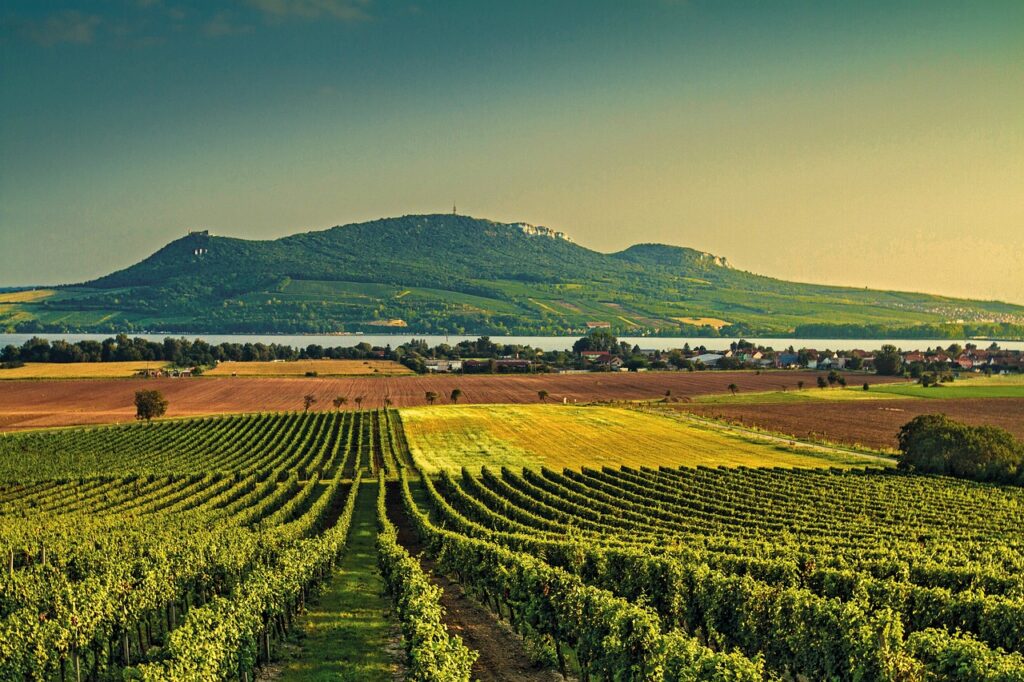
Český Krumlov and South Bohemian Region
The South Bohemian Region, an administrative division of the Czech Republic primarily situated in the southern part of historical Bohemia, is renowned for its quaint villages characterized by central ponds and typically constructed in the Rustic Baroque style. Positioned within the Šumava National Park, named after the Bohemian Forest or “Šumava,” often referred to as “the green roof of Europe,” the region is famed for its pristine glacial lakes, peat bogs, and offers an ideal setting for outdoor activities such as hiking, cycling, skiing, allowing visitors to immerse themselves in unspoiled natural beauty.
A standout gem in the region is the picturesque town of Český Krumlov, considered one of Czechia’s most visited places. Its historic center earned a spot on UNESCO’s World Heritage List in 1992, alongside Prague. Unlike many similar towns that faced substantial damage during wars, Český Krumlov preserved its old architecture and street layout to such a remarkable extent that it received a World Heritage Site designation. Drawing over a million tourists annually, Český Krumlov, founded in the 13th century by the Vítkovci family, captivates visitors with its prominent attractions, including the historic Český Krumlov Castle, the unique Baroque Theatre, the enchanting Church of St. Vitus, and the charming Unity Square.
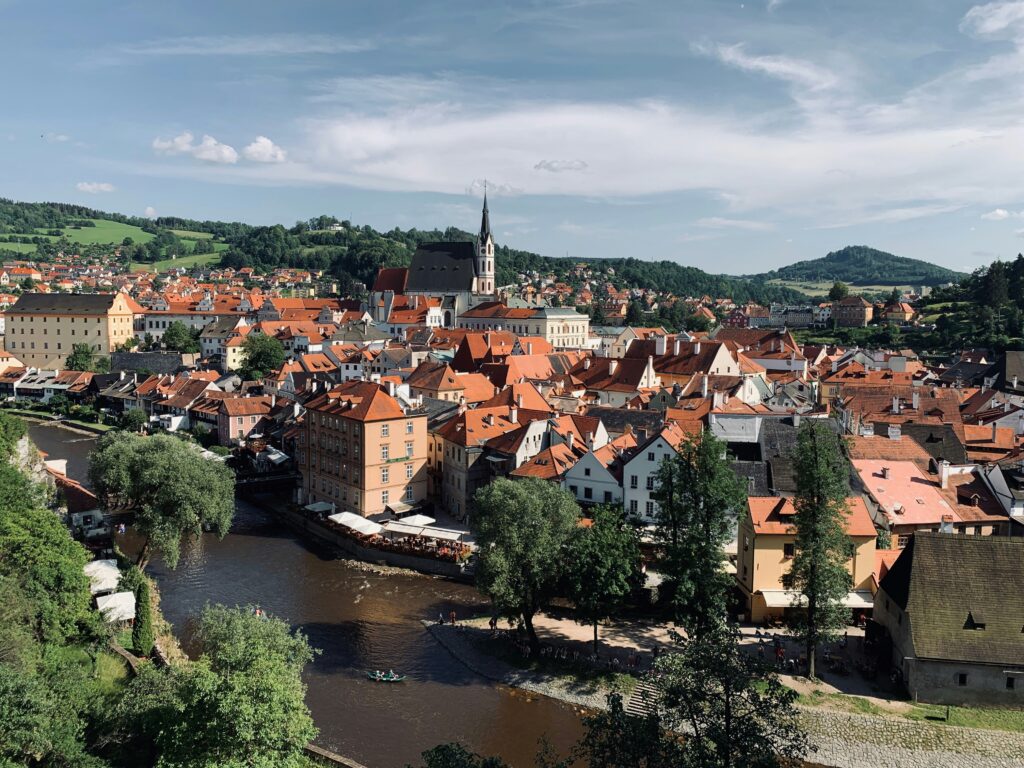
The Hradec Králové Region
The Hradec Králové region is an administrative unit of the Czech Republic located in the north-eastern part of the historical region of Bohemia and it takes its name from its capital, Hradec Králové.
The region boasts various natural attractions, including the Krkonoše National Park with the highest mountain in the Czech Republic, Sněžka, and fascinating sandstone rock cities. There are also a significant number of castles and other cultural, architectural, and historical monuments. These attractions, combined with ideal conditions for mountain sports such as hiking, cycling, boating, and skiing, attract many visitors of all ages all year round also from abroad. The most popular excursion destination is the Safari Park in Dvůr Králové nad Labem but the attractiveness of the region as a tourist destination is also given by its skylines, dominated by the Gothic Cathedral of the Holy Spirit and the Renaissance White Tower.
The center of the region is the city of Hradec Králové, one of the oldest cities in the Czech Republic. It is situated at the confluence of the Elbe and Orlice rivers where the first settlements date back to the times of ancient Rome. The first written mention of Hradec Králové as a town was found in the deed of Premysl Otakar I of Bohemia from 1225. The city’s name, translating to “the Castle of the Queen,” is a reference to Elizabeth Richeza who was the wife of two kings, Wenceslaus II of Bohemia and subsequently Rudolph III of Habsburg, and who had Hradec Králové among the towns included in her dowry. Nowadays, Hradec Králové is the natural center of culture and education of the Hradec Králové region and stands out for its fascinating mix of history and modernity. The city has its own university and it is also famous for Petrof pianos, which have been manufactured there since 1864 until today.
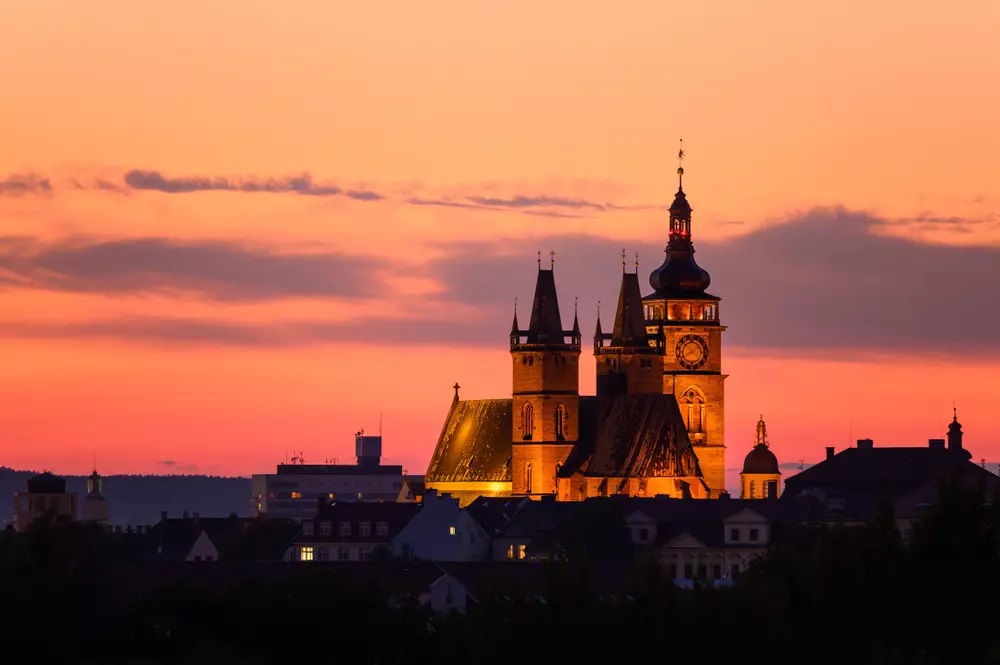
Plzeň
The Plzeň region, situated in the southwestern part of Bohemia, serves as an administrative unit in Czechia. Its principal city is Plzeň, also recognized as Pilsen, a name synonymous with pilsner beer for many enthusiasts. This association is well-founded as the renowned Pilsner Urquell brewery was established in this city by Josef Groll in the mid-19th century and continues to produce there this iconic pale lager.
For both beer lovers and history enthusiasts, the brewery offers various tours that cater to both groups and individuals. These tours provide a captivating journey through the original locations where Pilsner Urquell beer originated, delving into the heart of the brewery with visits to three brewhouses spanning different centuries. Each tour culminates in a tasting session of an unfiltered Pilsner Urquell beer produced within the historical cellars, allowing visitors to fully immerse themselves in the rich history of this Czech brewery.
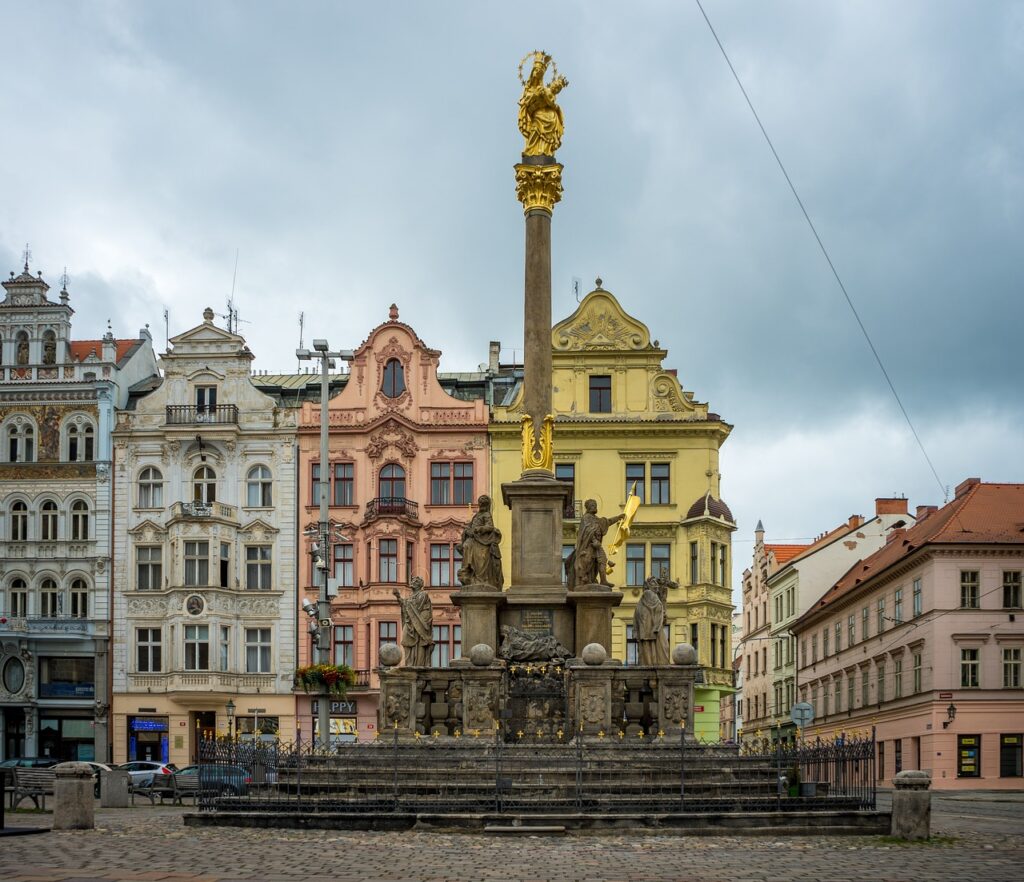
Potential for Tourism Growth
The Czech Republic has a great potential for growth in the tourism sector and clearly an increase in tourist flow would positively affect other sectors like Ho.re.ca., retail, real estate investments, and eventually the economy at large.
The president of AHR ČR, Václav Stárek, commented positively on the 2023 results, calling them ‘very satisfying’. However, he also urged public institutions to invest more in promoting the Czech Republic abroad in order to attract more foreign tourists, not only in Prague but also in all the other regions of the country. According to Stárek, local authorities should allocate part of the proceeds of the tourist tax to tourism promotion, in order to ensure the continued growth of the sector.
The Czech Republic, with its enchanting landscapes, historic charm, and diverse destinations, possesses an unparalleled beauty that beckons exploration. While brimming with tourism potential, a further effort to promote its wonders abroad is needed to let the world discover the hidden gems that await in this captivating European destination.
Sources: : https://www.camic.cz/, https://tourdata.cz/, https://www.czso.cz/, https://www.ahrcr.cz/, https://www.amazingczechia.com/, https://www.visitczechia.com/




